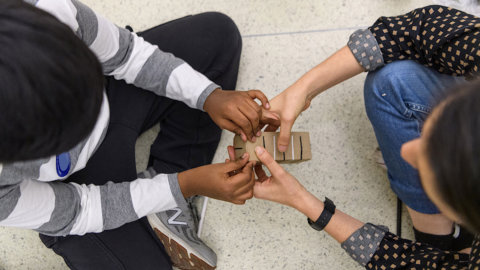Il Guggenheim for All Toolkit was designed to help any cultural institution make their programs more accessible for visitors with autism and sensory sensitivities. Developed by and for museums, its intended use is far-reaching, serving as a roadmap for institutions that prioritize the comfort and enjoyment of the public. The activities and strategies presented in the toolkit are drawn from the collective experience of different members of the autism community; including classroom teachers, museum educators, occupational therapists, occupational specialists, and autistic individuals and their families.
What is Guggenheim for All?
Guggenheim for All is an initiative to create a welcoming and accessible museum experience for neurodivergent people. It provides resources for museum visitors, programs that support creative exploration and learning, and engagement opportunities that highlight the strengths and interests of people on the autism spectrum. Guggenheim For All is made possible by Katherine and Peter Kend, Annie and Gaines Wehrle and Michael Wehrle in honor of Ebersole Gaines and Peter Lawson-Johnston. Additional support is provided by the Seth Sprague Educational and Charitable Foundation.
Educational programs with social narratives and lesson plans
A section fundamental of toolkit contains an overview of the characteristics of autism – and how they might be recognized by neurotypical people – with the aim of informing museum staff and minimizing barriers to entry. The paper explains the general sensory principles associated with autism, or how it affects one's perception, and offers specific guidelines and strategies for museums to reduce or even eliminate associated unpleasant sensory experiences.
Another key resource in the toolkit provides guidance on building educational programs for autistic students in museums. The section includes sensory tools and maps, social narratives, lesson plans and activities that can be reproduced at other institutions, together with suggestions on how to customize and develop them in accordance with the curricula of other museums. Additionally, the toolkit includes frameworks for training programs to guide staff in facilitating the art and programs for engaging neurodivergent audiences.
In addition to outlining ways to improve museum engagement with visitors with autism and sensory sensitivities, the toolkit lays out best practices for developing internship opportunities e work for neurodivergent individuals within cultural organizations. This includes instructions for structuring a schedule, interviewing, onboarding, and supporting neurodivergent employees in the workplace.





